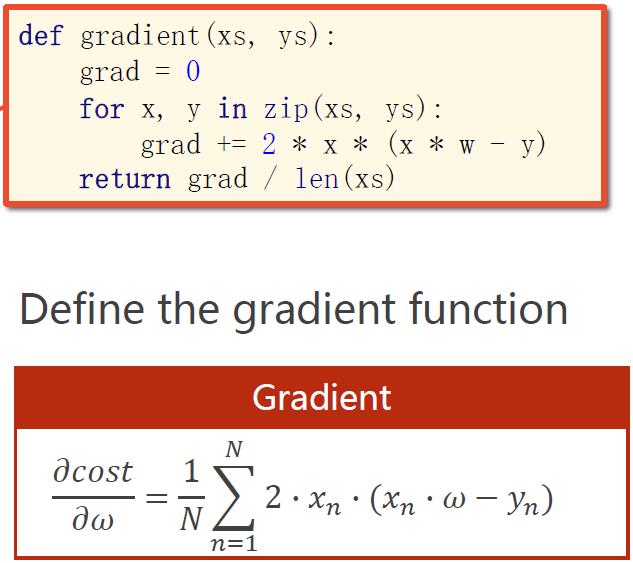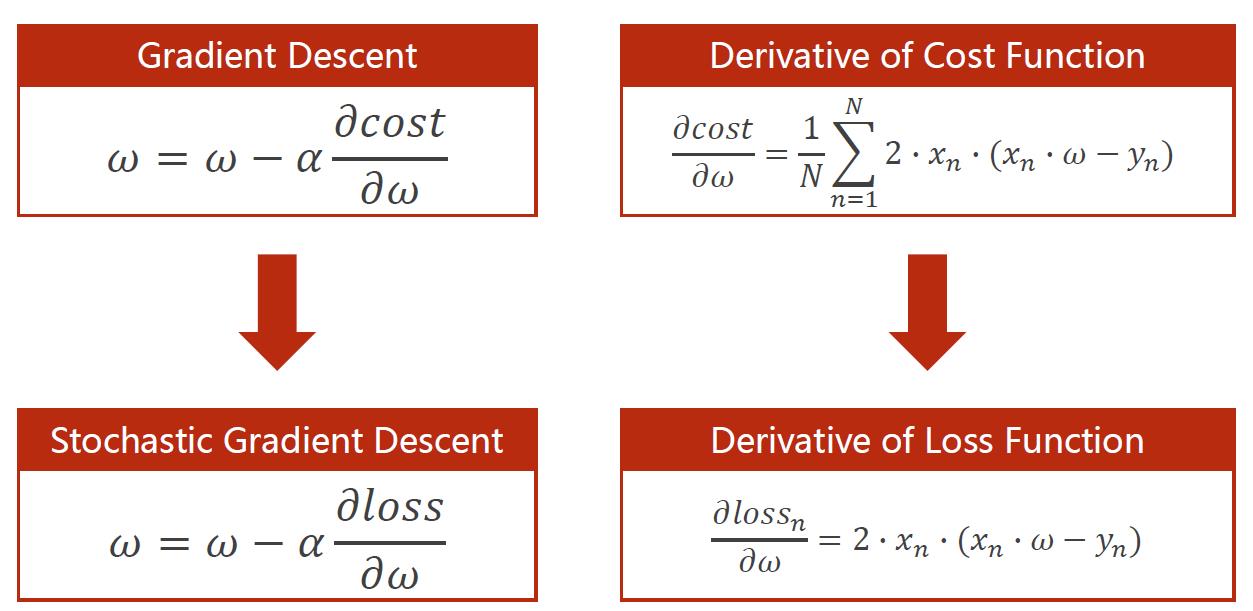pytorch学习笔记:梯度下降
Posted Z|Star
tags:
篇首语:本文由小常识网(cha138.com)小编为大家整理,主要介绍了pytorch学习笔记:梯度下降相关的知识,希望对你有一定的参考价值。
梯度下降:
w=1.0 a=0.01
x_data = [1.0 , 2.0 , 3.0]
y_data = [2.0 , 4.0 , 6.0]
w = 1.0
def forward(x):
return x * w
def cost(xs, ys):
cost = 0
for x, y in zip (xs,ys):
y_pred = forward(x)
cost += (y_pred - y) ** 2
return cost / len(xs)
def gradient(xs, ys):
grad = 0
for x, y in zip (xs,ys):
grad += 2 * x * (x * w - y)
return grad / len (xs)
print ('Predict (before training)', 4 , forward(4))
for epoch in range (100):
cost_val = cost(x_data, y_data)
grad_val = gradient(x_data, y_data)
w -= 0.01 * grad_val
print (' Epoch:', epoch, ' w=', w, ' loss=', cost_val)
print ('Predict (after training)', 4 , forward(4))


随机梯度下降:
不求和,改为随机抽取某个样本求导
相当于不往最陡峭的地方下降,而随便往下面走一步
公式对比:

x_data = [1.0 , 2.0 , 3.0]
y_data = [2.0 , 4.0 , 6.0]
w = 1.0
def forward(x):
return x * w
def loss(x, y):
y_pred = forward(x)
return (y_pred - y) **2
def gradient(x, y):
return 2 * x * (x * w - y)
print ('Predict (before training)', 4 , forward(4))
for epoch in range (100):
for x, y in zip(x_data, y_data):
grad = gradient(x, y)
w = w - 0.01 * grad
l = loss(x, y)
print (' Epoch:', epoch, ' w=', w, ' loss=', l)
print ('Predict (after training)', 4 , forward(4))
两者比较
性能:GD<SGD
时间:GD>SGD
因此采用部分(Batch)随机梯度下降(SGD)
以上是关于pytorch学习笔记:梯度下降的主要内容,如果未能解决你的问题,请参考以下文章